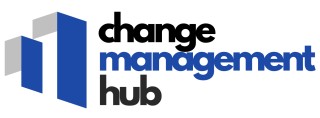-large-teaser.webp)
What is the congruence model?
Diving into the Basics of the Congruence Approach
When we think about managing organizational change, the congruence model offers a comprehensive framework for understanding how different elements within an organization—such as people, tasks, and structure—interact to affect overall performance. Originally developed through the collaboration of experts in organizational behavior, this model serves as a powerful tool in change management, aimed at aligning the various components of an organization to improve its effectiveness.
The congruence model is centered around the idea of analyzing the achievements and performance gaps in organizations by examining the interaction between different components. This model adopts a holistic view, proposing that an organization's success is not merely a function of its individual parts but rather the degree to which these elements fit—or are congruent—with one another. These congruent elements reflect the company culture and influence organizational performance.
Within this framework, congruence is not just about appearances; it's about ensuring that the organizational structure, culture, and individual goals align well enough to support the achievement of collective objectives. This creates a powerful congruence effect that facilitates smooth operational processes and successful decision making.
Utilizing the congruence model allows organizations to engage in an in-depth analysis of its operations, drawing attention to mismatched or poorly aligned elements that could undermine performance. By addressing such incongruities, organizations are better positioned to support employees, enhance communication, and manage change effectively.
As you continue exploring how the congruence model can be leveraged during organizational shifts, consider examining how its core principles can be applied to diverse scenarios and integrated alongside other popular frameworks.
Key components of the congruence model
Exploring the Fundamental Aspects of the Model
The foundation of the Tushman and Nadler congruence model lies in its ability to link various components of an organization, emphasizing how harmoniously these elements work together to achieve optimal performance. The model suggests a robust structure that aligns the critical facets of a business: people, tasks, structure, and culture. Understanding these components provides a clear pathway to enhancing organizational performance through effective change management.- People: This element focuses on the human resources within the organization. It includes their skills, motivation, perceptions, and interactions, which play a pivotal role in influencing the performance and effectiveness of the organizational change process.
- Tasks: Tasks are the fundamental activities that must be performed to achieve organizational goals. A thorough task analysis is essential to understanding how these tasks align with individual roles and organizational objectives, thereby contributing to the overall congruence within the organization.
- Structure: The organizational structure defines roles, responsibilities, reporting relationships, and decision-making processes. A well-defined structure ensures that there is clarity and order, facilitating seamless execution of tasks within the company.
- Culture: Organizational culture encompasses the shared values, beliefs, and norms that influence behavior within the company. It reflects the collective mindset that can significantly impact change efforts and organizational success.
Applying the congruence model to organizational change
Integrating the Congruence Model Into Change Initiatives
When considering the numerous approaches to change initiatives, the congruence model emerges as a practical tool that allows organizations to better align their internal elements for improved performance. By using a structured method of organizational analysis, companies can identify misalignments between existing work, people, and structure with the intended change objectives.
One pivotal step in implementing the congruence model is conducting a thorough assessment of the current organizational behavior. This requires understanding how the organizational structure and culture influence both tasks and people. The tushman congruence method helps reveal any inconsistencies that might hinder organizational performance. A detailed analysis not only underscores these discrepancies but also taps into power and influence dynamics present within the organization.
Implementing change using this model involves mapping out each element of the organization and examining their decision-making processes. Understanding the interactions between work and people elements lays the groundwork for creating effective business management process templates that resonate with the company’s culture. When congruence is achieved, the result is a seamless transition, often leading to sustainable improvements in organization performance.
For those seeking practical examples of the congruence model in action, exploring innovative approaches through agile product lifecycle management demonstrates how this model facilitates dynamic transformations in the modern market.
Benefits of using the congruence model
Advantages of the Congruence Model in Enhancing Organizational Change
When organizations undertake change initiatives, ensuring all elements align becomes crucial for optimizing the outcomes. Utilizing the congruence model can greatly enhance the process and outcomes of organizational change by offering several key advantages:- Holistic Perspective: This model allows a comprehensive view of an organization by considering tasks, people, structure, and culture. Understanding how these elements interact lends crucial insight into optimizing performance and implementing effective change.
- Alignment Enhancement: Through its focus on congruence, the model facilitates better alignment between various organizational components. When aspects like work, structure, and people are in harmony, organizations typically exhibit improved performance.
- Facilitated Decision Making: The Tushman and Nadler framework helps leaders analyze the organizational environment effectively, simplifying complex decision-making processes. This leads to more strategic decisions that are vital for successful change management.
- Adaptability to Change: By employing an analysis-based approach, the congruence model can make the organization more adaptable to change. It pinpoints areas misaligned with change, allowing for targeted improvements in people or structure, ultimately enhancing the organization's adaptability.
- Operational Efficiency: When elements like structure, people, and tasks are in concord, it eliminates redundancies and inefficiencies within the business processes, fostering a more efficient operational environment.
Challenges in implementing the congruence model
Facing the Challenges of Implementing the Congruence Model
Adopting the congruence model for organizational change brings with it several challenges that management teams often encounter. Recognizing and addressing these issues is vital for leveraging its full potential.- Complexity in Analysis: The congruence model requires a detailed analysis of multiple elements such as tasks, structure, and people within an organization. This complexity can overwhelm those not familiar with comprehensive organizational analysis and may require external expertise to properly execute.
- Alignment of Organizational Elements: Ensuring alignment between the various dynamic forces such as culture, work, and structure can be daunting. This requires meticulous evaluation and potentially reshaping existing patterns, a challenge prone to resistance from within the organization.
- Resistance to Change: As with any major organizational change, there may be resistance, particularly if the changes affect power structures or ingrained behaviors. Overcoming this requires effective communication and involvement of key stakeholders throughout the change management process.
- Resource Intensive: Implementing the model demands a significant investment in time and resources. The process itself is thorough and requires commitment across all levels of the organization, from management to front-line staff.
- Adaptability: While the congruence model offers a structured approach, every organization is unique. Adapting the model to fit specific organizational structures and cultures without losing the core principles can be a challenging balancing act.













